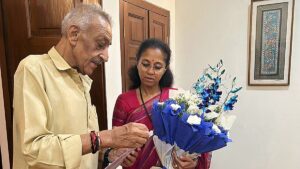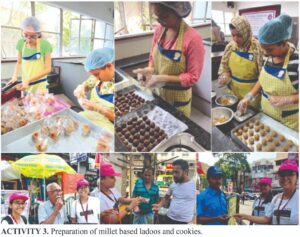
Dr. Manish Kumar Varma
Dr. Keyoor Pathak
Kuri-maar is a Punjabi term that usually refers to female-foeticide or killing of girl children in the womb itself. Infanticide has been a grave feature of Indian society for the last few centuries, and recently, specifically in Punjab and its nearby regions like Haryana and so on, where this may be seen in relation to massively disproportionate sex ratio that is around 889/1000.
There is a simple understanding about the emergence of the practice is it is inherent in the culture itself, but the role of the economic or political model, which shapes the culture and society itself is usually overlooked. So, through this brief argument, we shall just have a look at its blooming as how the policies of the state are mostly responsible for the production and re-production practice.
Probing the history of infanticide, we find its first documented evidence in the literature of British official Jonathan Duncan of 1789, in which he talked about the killings of the prince that was being practiced in the family of the kings of Banaras, probably it would have been for the battle of the throne. In Punjab, its first documented history goes back to the same colonial period, particularly after the annexation of the region by John Lowrance in 1846. During the period it was being practiced among Rajputs and Bedi-Khatri communities, but in the course of time, it became common among other communities too.

Notably, historians have no sufficient evidence manifesting the religious textual ground to this sinister practice, as to some extent have been observed in the case of the Sati-system in Bengal; however, a story of the Sikh society is being viewed as a backing force by some people. The story starts like this: a descendent of Guru Nanka, Dharam Chand, on the eve of his daughter’s marriage, after facing some humiliation at the hands of the groom’s party, declared ‘all Bedis should kill their daughters as soon as they were born rather than face insult ever at the hands of groom’s party. But this reactionary statement of a wretched father cannot be perceived as a major religious or cultural force to this custom, even in a condition when there are no such types of discriminatory evidence in the religious texts of the Sikh communities.
Few studies focus on the dowry system, and endogamous structure of the society as the prime reasons behind its emergence, but available massive empirical studies counter the argument. Although, it may be viewed as one of its causes but not certainly a major one. Endogamous social structure and dowry did not inevitably provide a favorable atmosphere to the custom to be born in the region.
Debates over the birth of the practice as it was embedded in the colonial economy may be perceived as reasonable arguments. The pre-colonial period is almost incapable to show sufficient evidence in this context. The root causes were inherent in the economic setup made for the colonial purposes; it was a very consequence of British rule and its policies that masculinized the economic system of the state, and in response, women lost their socio-economic importance in the society. The commodification and mechanization of the traditional agrarian economy brought marginalization to women. For instance; the land was being transformed into a commercial commodity, and the major source of income of the people was dependent on the colonial economic system, which was militarized and industrialized, wherein was lesser scope for the women’s political and economic entry.
It is also a stark fact that colonial rule had sabotaged the traditional economic & social structure, consequently, a larger population from all the classes were pushed into the darkness of poverty and social anarchy; therefore, apart from Bedi & Rajput communities’, other social groups also fell into this barbaric custom as women or girl had become an economic and social burden to them. Following the rapidly growing brutality, the British government itself introduced some regulations in order to curb the custom, for example in 1870, Act VIII (Female Infanticide Act) was brought to uplift them, but it could not be influential in mitigating the practice properly.
The age of Britishers is gone, but the practice of brutality is still continued. The prevailing status to the girl can be seen in various proverbs and folk tales of Punjabi society, one of them is: goor khaie, poonee kuttea/aap na aeei, bhay an ghuteaa (eat your jaggery and spin your thread, but go and send a boy instead). An author, who is now residing in abroad wrote her personal experience as when she was born her father asked bete ki tarah palunga ise. In the core mind of society, the desire for a son is common, irrespective of religion, caste, class, and education.
Despite the fact, we have numerous strong constitutional provisions against the custom as ‘Pre-Conception and Pre-natal Diagnostic Techniques (Regulation and Prevention of Misuse) (PCPNDT) Act of 2004’, and the mammoth infrastructure of modern development as health, education, etc., the customs could not vanish in the region. This very situation is when the performance of the state, in terms of the developmental indicators is much better than most of the Indian states. Some scholars argue about the special focus on education to mitigate the issue, but this is hasty advocacy that can be empirically rejected easily, for example, NSO data of literacy of 2017 present some different pictures; in which the female literacy rate of Punjab (78.5 percent) is better than the many states as of Odisha (70.3 percent), Madhya Pradesh (65.5 percent), Karnataka (70.5 percent), Jammu & Kashmir (68 percent), Gujrat (74.8 percent), Bihar (60.5 percent) and etcetera. Similarly, in terms of poverty its situation, around 8.26 percent, is better than most of the Indian states, only behind Goa (5.09 percent), Kerala (7.05 percent), Himachal Pradesh (8.06 percent), and Sikkim (8.19 percent). Similarly, over the issue of health, again its performance is comparatively better than most of the Indian states in 2019.
When we analyze the female foeticide data, astonishingly the condition of Punjab depicts the tragic scenario; hereby, sex ratio is directly linked to the issue of female foeticide, and in this way the situation is alarming. Between the period 2013-15, in Punjab it was around 889/1000 that was behind many Indian states including those which are in starvation like condition; for example, it is behind Bihar (916), Odisha (950), Jharkhand (902), Chhattisgarh (961), Madhya-Pradesh (919), Asom (900) and many other states.
The alarming issue among the policymakers and society is why apart from huge planning and programs such custom is prevalent till today! One thing is very clear, this is patriarchal violence and this sort of patriarchy is a resultant of our developmental limitations, which usually favored the interest of men or privileged classes. For example, in the upcoming decades of independence, we celebrated the green revolution, which was a masculinized project, but soon it started showing the sign of sorrow and it became the cause of bringing inequality and disparity and damaged the fertility of land and diversity of crops production. Despite this, the big tragedy was a transformation from subsistence agriculture to commercial agriculture that finally hampered the gender-balanced agriculture system. And, consequently, women lost their role in the production system.
From the perspective of eco-feminism and some other ideological lenses, the entire model of the economy is emanating the waves of patriarchy. Our model of the economy is an imitation of the economy of the North Countries, which is a masculinized project. So, in the name of development what we are introducing through our policies is not properly fitted for all. Since, the 1990s, the neo-liberal economy has consistently boosted the idea of masculinity and unbalanced the socio-economic status of the globe. This is the need of the hour to re-think the economic model to bring an inclusive and people-centric development.
- Dr. Manish is COD, School of Humanities, LPU, Punjab while Dr. Keyoor Pathak teaches at the School of Humanities, LPU, Punjab


